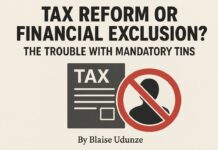by NIyi Jacobs
Six years after the launch of the Micro Pension Plan (MPP), its adoption remains slow, raising concerns about the effectiveness of Pension Fund Administrators (PFAs) in driving the scheme. The National Pension Commission (PenCom) introduced MPP in 2019 to provide retirement savings for informal sector workers, but enrollment figures have been disappointing.
As of Q3 2024, total registrations stood at 164,031, with only 12,241 accounts actively funded. Between 2020 and Q3 2024, just 5,971 new active accounts were added, and total savings in micro pension RSAs reached ₦967.19 million, a modest increase from ₦89.13 million in 2020. Despite Nigeria’s large informal workforce, the numbers indicate that micro pensions have yet to gain traction.
A key challenge has been the lack of interest from PFAs, whose primary focus remains on corporate pension contributions. Reports from PenCom showed that some PFAs barely participated in the scheme, with three firms registering only six subscribers in Q3 2022. Crusader Sterling Pensions registered four contributors, while Guaranty Trust Company and Radix Pension Managers registered just one each. The reluctance of PFAs to push micro pensions is attributed to high operational costs, low contribution amounts, and stringent regulatory requirements, which make the business less attractive.
The structure of traditional pension administration does not favor the informal sector, where incomes are irregular, and financial literacy is low. Many workers in this category also have a deep distrust of formal financial institutions, making it even harder to drive adoption. Without targeted engagement, flexible contribution models, and localized outreach, expanding micro pension coverage will remain difficult.
To address these challenges, industry stakeholders are calling for the licensing of dedicated micro pension companies. These firms would focus exclusively on the informal sector, operating with a lower cost structure and using tailored business models that align with the realities of low-income earners. Unlike traditional PFAs, micro pension firms would be positioned to engage directly with contributors through grassroots networks, mobile payment solutions, and community-based agents.
Proponents of the move argue that licensing separate micro pension operators would remove the burden from PFAs and encourage greater participation from businesses that specialize in informal sector financial services. They suggest that these firms should have capital requirements and regulations suited to their niche, ensuring sustainability without unnecessary financial strain.
Several countries have successfully adopted similar models. In India, the Atal Pension Yojana (APY) scheme, launched in 2015, has recorded significant success by leveraging microfinance institutions and financial technology to drive participation among low-income workers. Kenya’s Mbao Pension Plan, tailored for informal workers, has also achieved remarkable growth by using flexible contribution structures and localized engagement strategies.
If Nigeria is to achieve meaningful financial inclusion for informal workers, it must rethink the approach to micro pensions. Allowing specialized firms to manage the scheme could accelerate growth, ensuring millions of self-employed Nigerians have access to sustainable retirement savings.














